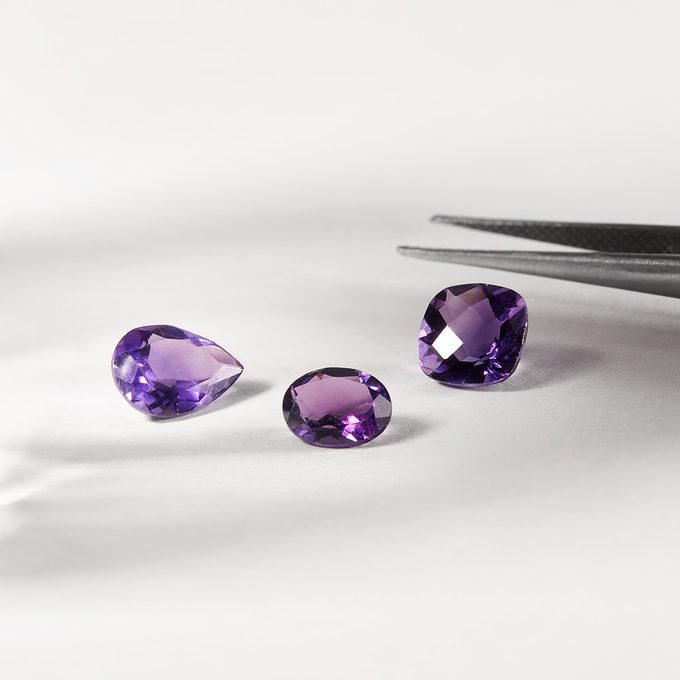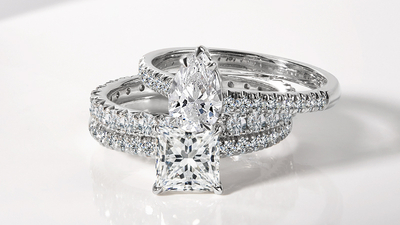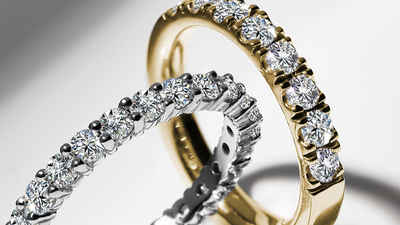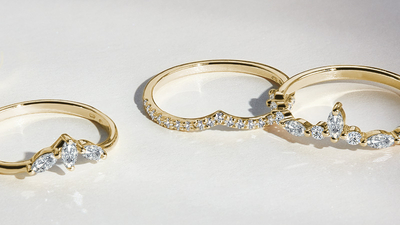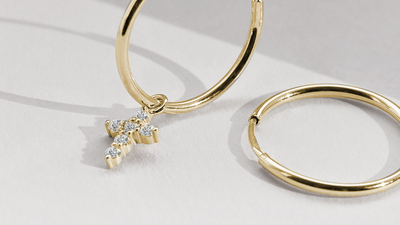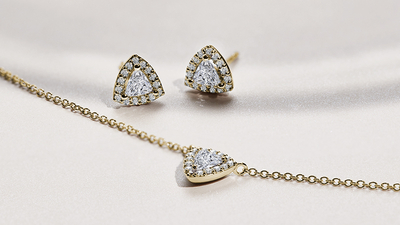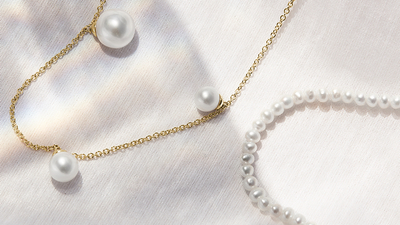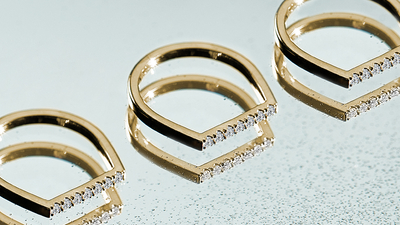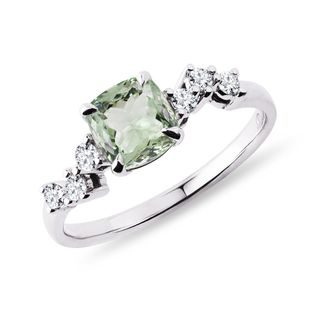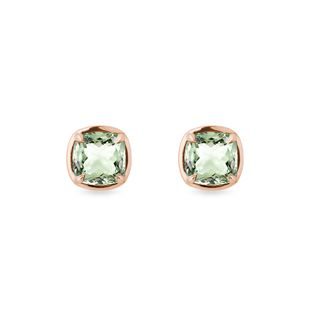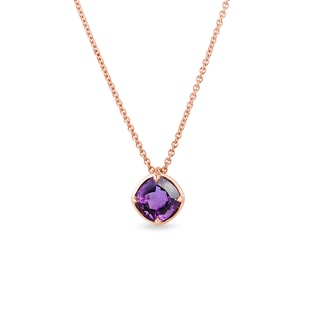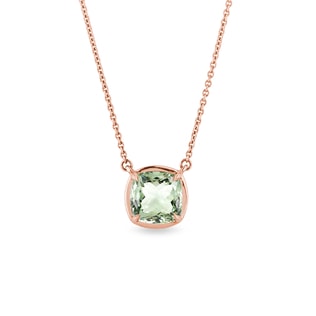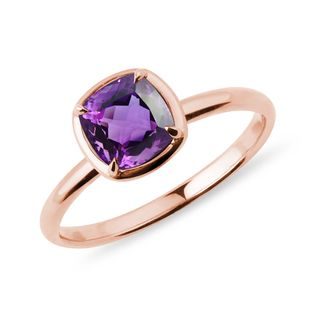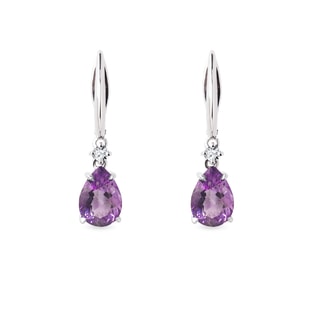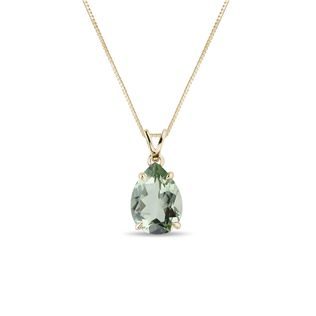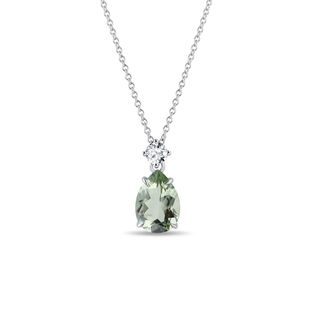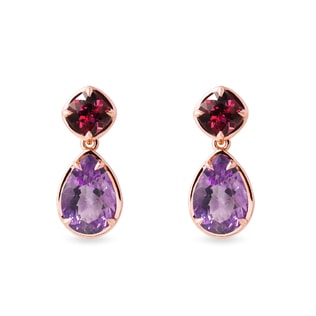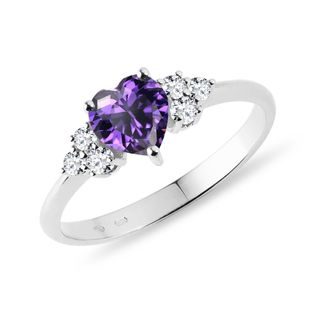The amethyst is a beautiful, purple-colored semi-precious stone. It got its name in ancient times thanks to its presumed ability to protect people from drunkenness. The word comes from the Greek amethyein or amethystos meaning “to not be drunk.” A Greek myth speaks of a beautiful girl, called Amethyst, and Dionysius, the god of wine and enjoyment. The girl did not show sufficient respect to Dionysius, so he became angry and sent two tigers to kill her. However, the goddess Artemis took pity on her and transformed the girl into a white crystal. Dionysius regretted what he had done and poured wine onto the crystal. And that’s how the amethyst came to be.
Amethysts in history, legends, and tradition
Based on archaeological findings of amethyst necklaces in Egypt, Sumer (now modern day Iraq), Afghanistan, and other places, we can deduce that amethysts were very popular in ancient empires. They were also mentioned in the Bible. During the Roman Empire and in later times, purple was the color of high social standing. Because of this, important men wore a purple cape, and their hands were often adorned with an amethyst ring. These were usually bishops who had gained some political power. As a result, the amethyst became a symbol of the Holy Church and is frequently worn by religious dignitaries.
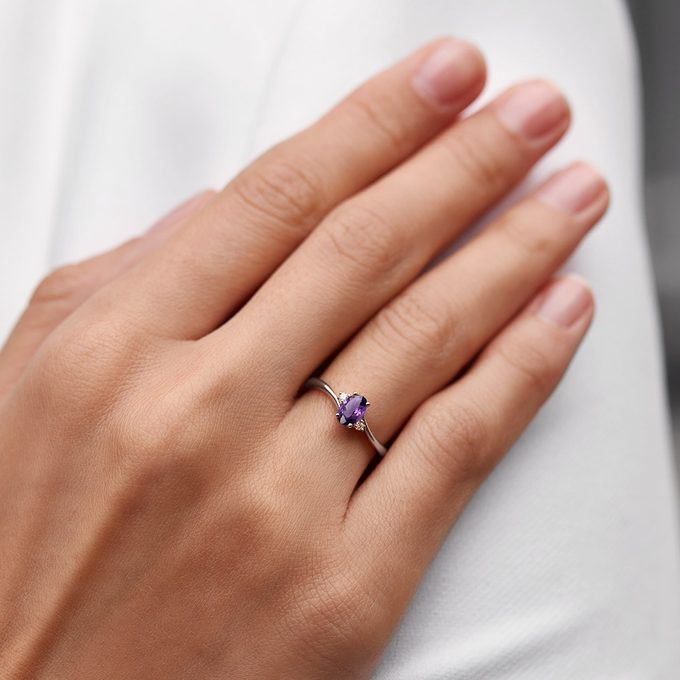 |
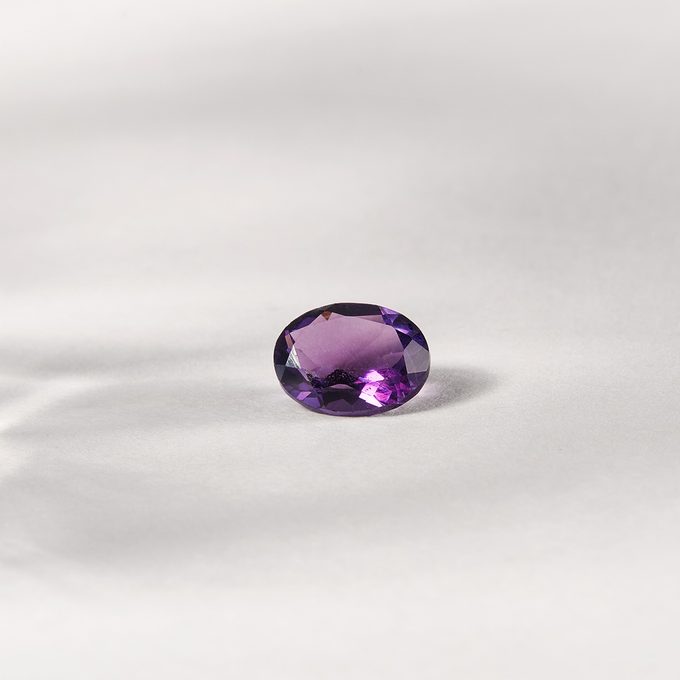 |
According to historical sources, amethysts were also a good luck charm for sailors and soldiers. The Greeks and Romans would drink out of amethyst goblets or carry amethysts to prevent drunkenness. The Italian astronomer Camillo Leonardi, who lived at the turn of the 15th and 16th centuries, wrote that amethysts quicken the mind and get rid of bad thoughts. The darker shades are best suited to artists and inventors, to whom they give inspiration and energy.
Amethysts apparently also have the ability to protect against and cure nightmares. They are said to symbolise true and constant love, and in fact, the amethyst is the stone of St. Valentine. It should be worn on the right index finger. Amethysts are the birthstone for the month of February, so an amethyst pendant or amethyst earrings are perfect gifts for people born in this month. The amethyst is also associated with the 6th and 17th wedding anniversaries.
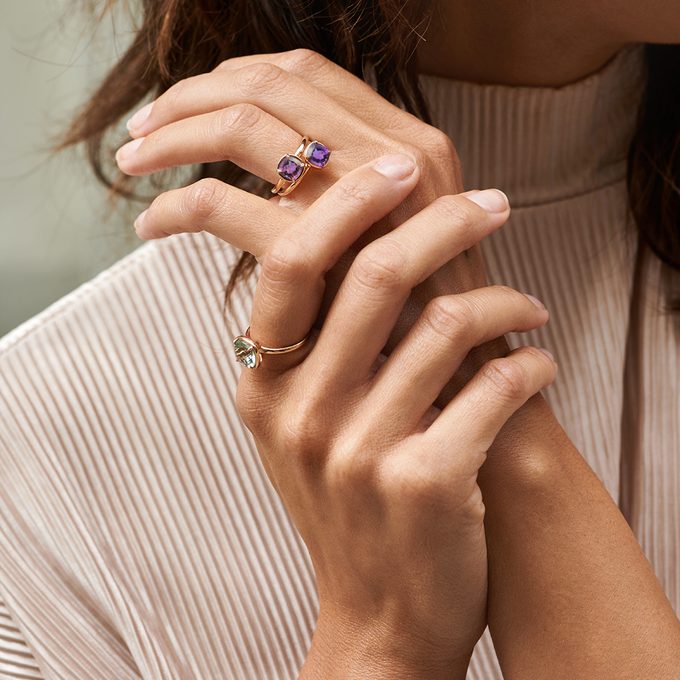
Amethyst, prasiolite, citrine, and ametrine: their properties and the differences between them
Amethysts are a type of quartz, the same as rose or smoky quartz, and as such they have a mineral hardness of 7. They are found quite frequently in nature, and we see them most often in the form of prismatic crystals, which can grow to huge proportions, or beautiful geodes, which can weigh several tons. Their violet, lavender, and purple color is due to the presence of iron in the crystal. They can be transparent, translucent, or opaque (non transparent). The crystals form in a trigonal system, are non-splitting, and have conchoidal and splintery fracture properties with a glassy to oily shine. An amethyst can only be corroded by hydrogen fluoride.
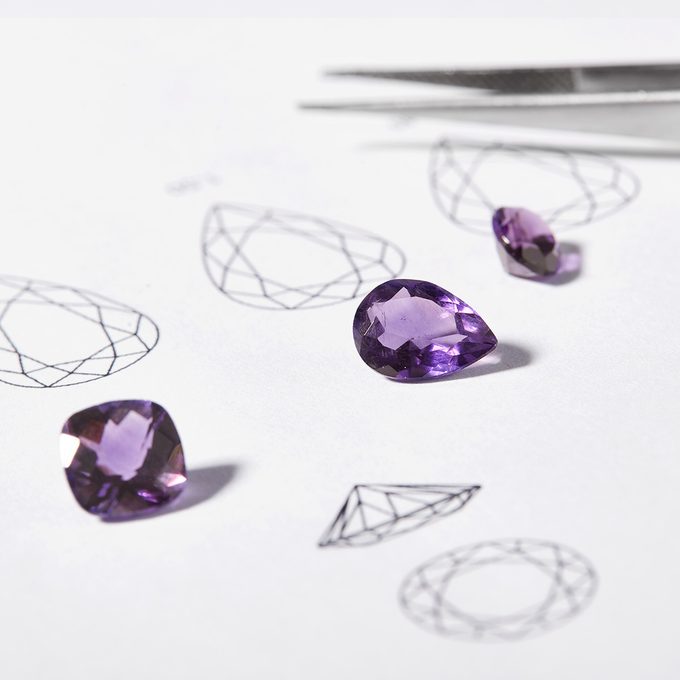 |
 |
If an amethyst is heated, even at the relatively low temperature of around 482°F, it loses its color and changes into a yellowish-brown colored stone called citrine. The majority of citrines that are sold today are in fact amethysts that have been heated in a furnace. They are sometimes called Brazilian citrine or Brazilian topaz. As opposed to genuine citrines, these heated ones are a touch more orange in shade; however, it is almost impossible to distinguish them from topaz with the naked eye. Ametrines are a special case – they are something in between an amethyst and a citrine. Half the stone is purple, while the other half is yellow.
These days, another relative of the amethyst has also become very popular: the green amethyst. In reality, green amethyst does not exist in nature. It is in fact a green-colored quartz which has added iron and nickel in it. A better description for it would therefore be lime citrine or, better still, prasiolite. However because prasiolites used in jewelry making are artificial, made by heating natural amethysts (the same as citrines), they are classified as green amethysts.
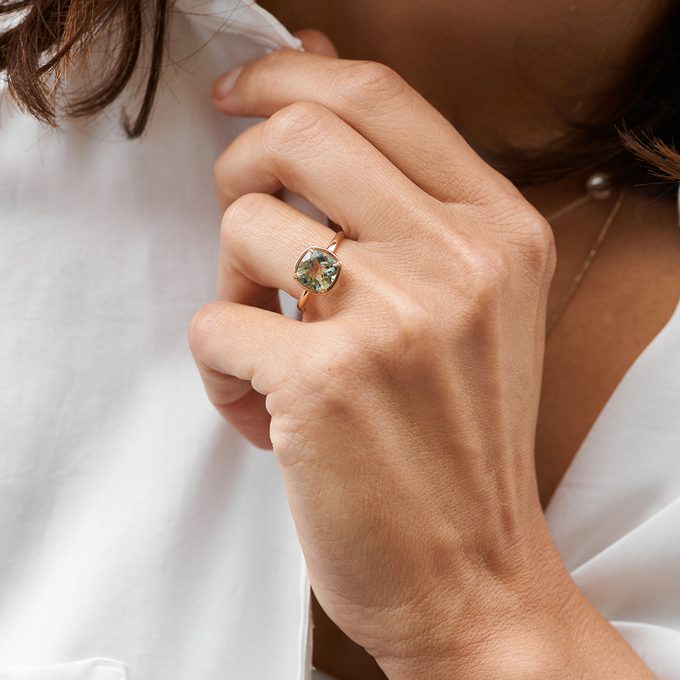 |
 |
How to choose the perfect amethyst jewelry
We can easily recognize an amethyst on sight. No other stone has its characteristic purple color. The best-quality stones are considered to be the ones with the richest purple and without any other shades of color. Due to their properties, amethysts are very durable, clear, and lacking any inclusions or cracks. For this reason, amethysts can be cut into relatively large individual pieces. If you like distinctive pieces of jewelry with large stones, and you don’t want to spend thousands of dollars, amethysts are the perfect choice. Their undeniable advantage is their easy accessibility (they are mined all over the world) as well as their affordable price.
Purple amethysts go well with all shades of gold. They really stand out when set in white gold, they complement yellow gold beautifully, and they create an interesting play of colors with rose gold. There’s something to appeal to everyone, and the possibilities are endless. The same applies to green amethysts. You will find green amethysts in our collection primarily set in rose and white gold. Amethysts also go well with other gems. They combine well with diamonds, but you could also consider the unique combination of an amethyst with a red rhodolite.
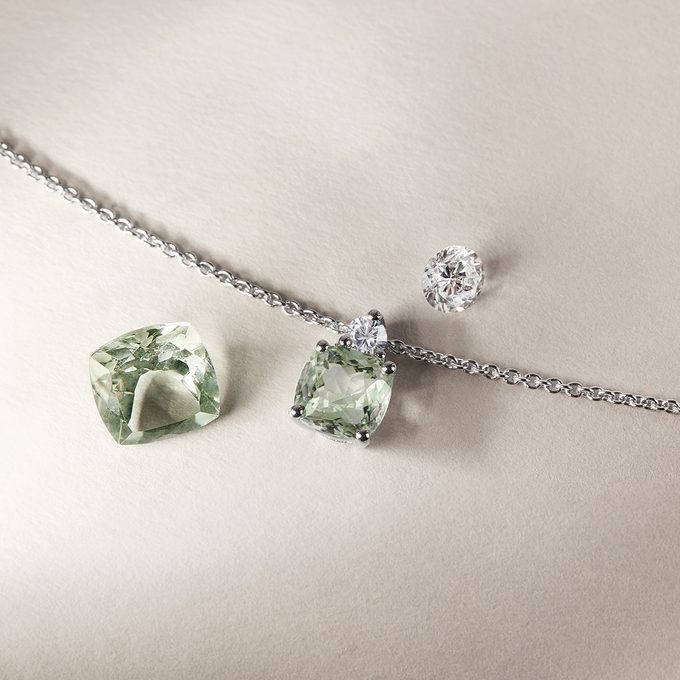
Amethysts are most commonly cut into traditional round or oval shapes. However, the teardrop (pear) shape embodies a simple elegance. If you would like something a little more interesting, go for an amethyst heart. Otherwise, the rounded square cut, called a cushion, is very modern and ideal for large colorful stones.
How to care for an amethyst’s natural beauty
Over time, amethysts lose their color when exposed to light. This is a natural process which cannot be reversed. The only way to bring color back into the stone would be to expose the stone to radiation, but then of course the entire piece would become radioactive. So here’s our tip: when you are not wearing your amethyst jewelry, place it in a box with a lid. Amethysts are relatively durable stones, so they don’t get damaged easily. But you should watch out for temperature shocks, excessive heat, and high pressure.
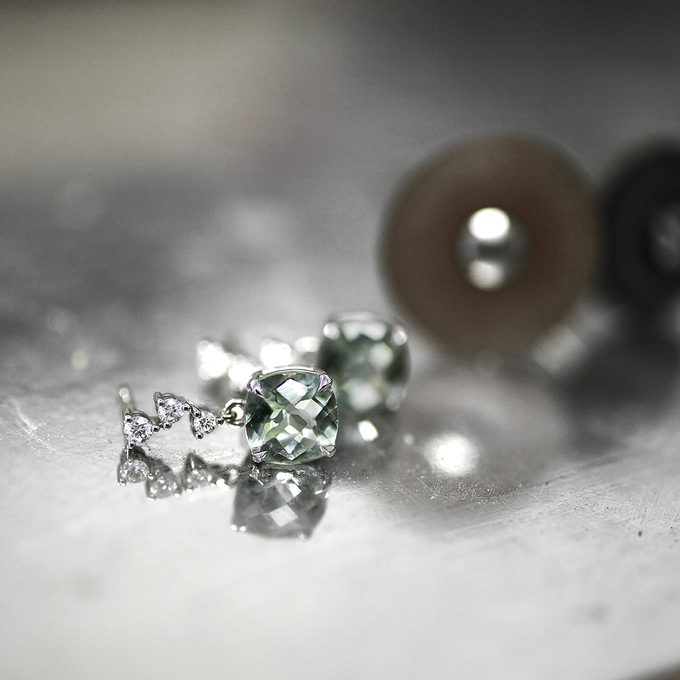 |
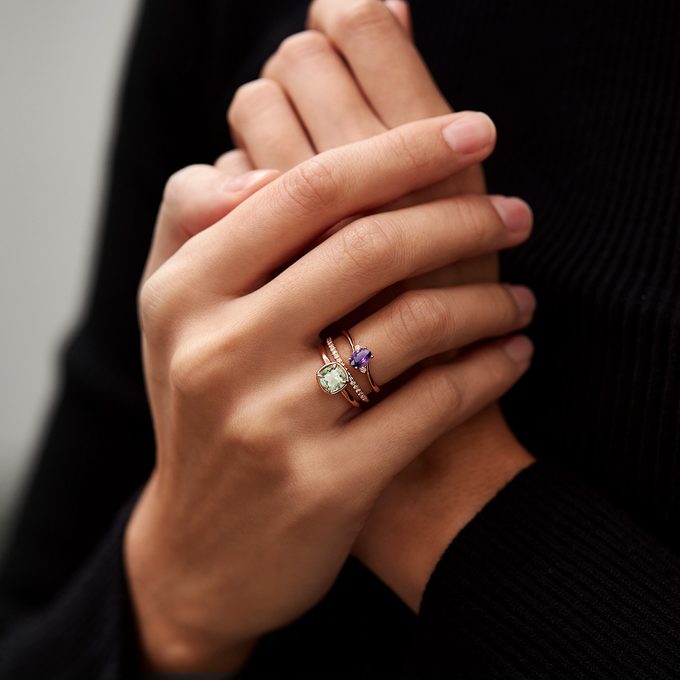 |
The ability to produce artificial varieties of quartz in a laboratory was discovered in the 19th century. The first hydrothermally developed quartz was developed in the 1890s. It was created for industrial use. Nowadays, we can find artificial amethysts even in jewelry stores, and without a gemological laboratory, we would not be able to tell them apart from natural ones. However, as the laboratory process to produce amethysts is very lengthy and expensive, natural amethysts are not worth replacing with artificial ones. But just so you can be absolutely sure, you will be given a complimentary Certificate of Authenticity with every piece of KLENOTA jewelry.
Where to find amethysts
Due to their abundance, amethysts are mined almost everywhere around the world. Depending on the region they’re from, they will tend to differ in color. Beautiful purple pieces come from Africa, Sri Lanka, and Borneo. Many amethysts come from India, too. From the 19th century on, they were also exported from Brazil and Uruguay. Before the discovery of mines in Brazil, amethysts were as expensive as rubies and emeralds.
There are also many deposits in the Czech Republic. Amethysts from Ciboušov in the Ore Mountains decorate important artifacts, and not just in Bohemia. For example, they are found in the St. Vitus Cathedral at Prague Castle. Even the chapels of St. Catherine and the Holy Cross at Karlštejn are decorated with sheets of amethyst from Ciboušov. In using these, Charles IV wanted the chapels to resemble a heavenly Jerusalem. Charles IV loved amethysts so much that he even had one set into the coronation cross.
